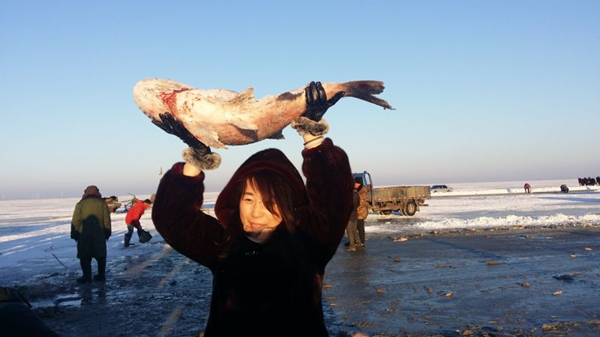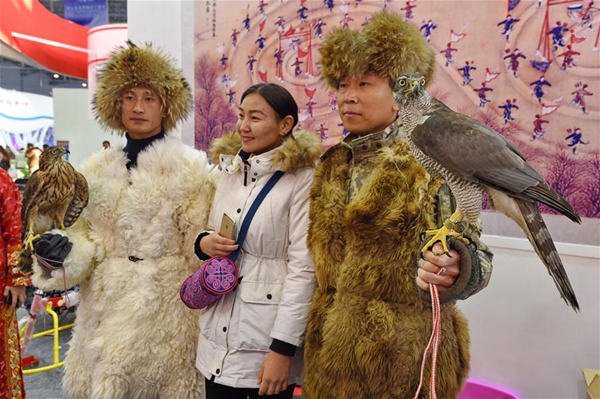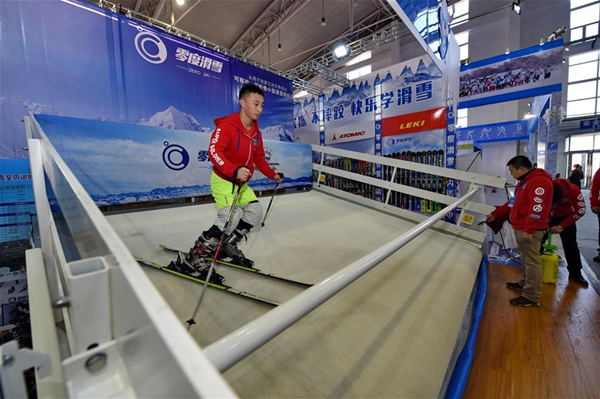Burning hot ice industry in Jilin
As winter comes, Jilin province again becomes a snowy wonderland with fields of white snow, crystal clear rime or hoarfrost and warm hot springs. All these scenic features have supported the rise of the province's ice industry.
According to statistics, the ice industry accounted for one third of the consolidated income of Jilin's tourism during the 12th Five-Year Plan(2011-2015).
 |
|
Chagan Lake Fishing is one of the most important customs in Jilin province and has attracted many tourists. [Photo provided to chinadaily] |
Four tourism products -- rime, ice and snow, hot springs and local customs
Jilin hoarfrost is one of the top four natural wonders in China (the other three are Guilin landscapes, Yunnan's stone forest and the Three Gorges on the Yangtze River). Every December to February, it comes at the appointed time to Jilin along the banks of the Songhua River, on Rime Island, and on the Lushui River in Fusong Town and Changbai Mountain.
However, rime changes its form based on the weather, so many tourists miss their chance to see its wonderful beauty.
Consequently, a Rime Experience Museum is to open in Jilin province, where rime will be produced through technological methods. In this way, tourists can enjoy rime any time, even in summer. The goal of keeping rime all year round is part of Jilin's "technology plus ice and snow" program.
Jilin has also developed other tourism products based on hot springs, snow and unique local customs.
Jumping into a hot spring in the snow is one of the most popular activities in the province. Visitors can relax in the hot water of the pools as snow falls around them.
Fishing in the Chagan Lake in winter is one of the most important customs in the province and has been developed into a fishing cultural tourism brand. Dozens of e-commerce and courier firms cooperate with the Jilin government to bring fish from Chagan Lake to people's dinner tables across the entire country.
Yang Andi, director-general of the Jilin Provincial Tourism Administration, said the symbols of Jilin's ice and snow culture are meant to spread warmth to more people -- snow scenery under sunshine, rime on the banks and looking up at falling snow from a relaxing hot spring.
 |
|
A visitor poses with two Manchu eagle-hunting culture performers at a snow expo in Changchun, Jilin province. [Photo/Xinhua] |
Promoting unique ice and snow culture
Su Wei, deputy director-general of the Culture Department of Jilin Province, said the Jilin government will enrich the ice and snow culture to improve its experiential value and promote it into an ice-based brand.
Tourists can visit ancient villages with Manchu, Korean and Mongol cultures and watch the ethnic custom performances. Local intangible heritages are also part of the unique Jilin ice-symbols.
Jilin has developed a tourism chain that offers sightseeing, playing ice sports, having local food, dipping into hot springs, watching ethnic performances and learning ice culture history.
The total number of tourists to Jilin reached 165,220,000 in the first three quarters of 2016, a 17 percent year-on-year growth. Revenue from tourism was 289.4 billion yuan ($41.66 billion), a year-on-year growth of 25 percent.
The province intends to integrate the ice industry with primary, secondary and third industries to further spread its influence within and beyond Jilin.
 |
|
An athlete tries a skiing simulator at Changchun's snow expo. [Photo/Xinhua] |




 Mail
Mail Print
Print Larger
Larger
